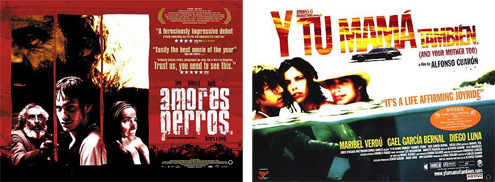Key Texts
- Amores Perros (Love’s A Bitch) 2000
- Y Tu Mama También (And Your Mother Too) 2001
Compare some of the stylistic features in the films you have studied discussing how far they make for a distinctive kind of cinema.
The study of so-called World Cinema tends to focus on common themes e.g. power, poverty and conflict, social class, gender representation et al within the confines of what has to be described as Hollywood Hegemony. Ironically ‘international film styles’ or World Cinema has heavily influenced Hollywood and continually makes intertextual references to Hollywood. Amores Perros was known as the ‘Mexican Pulp Fiction’ in this regard. World Cinema seems to attract artistic definition (anything produced outside of Hollywood) or economic definition (associations with non-western economies in developing countries). Access, awareness and distribution continue to dictate our understanding of World Cinema with audiences actively involved in the process of ‘looking for films’ either online, at Film Festivals or on DVD. Mexican Cinema remains one of the better-known international film styles that have emerged from ‘World Cinema’.
In the 1930s and 1940s Mexican Cinema was known for its Comedia Ranchera films that were basically ‘singing cowboy films’ about the Mexican Revolution while melodramas and comedy dominated in the later 1940s. During the 1950s through to the 1970s Mexican film entered a period of state control and cinematic legislation reduced the number of screens…
